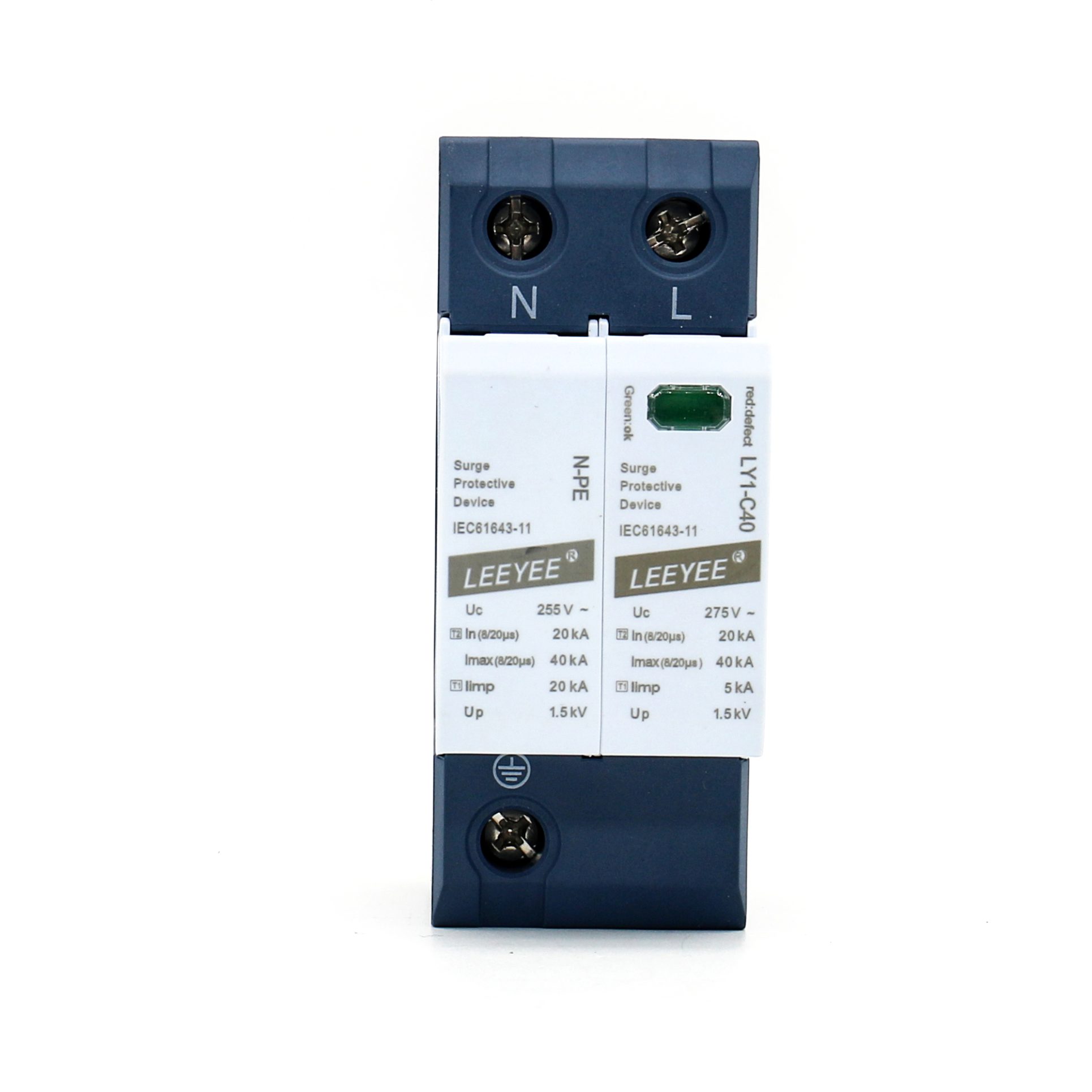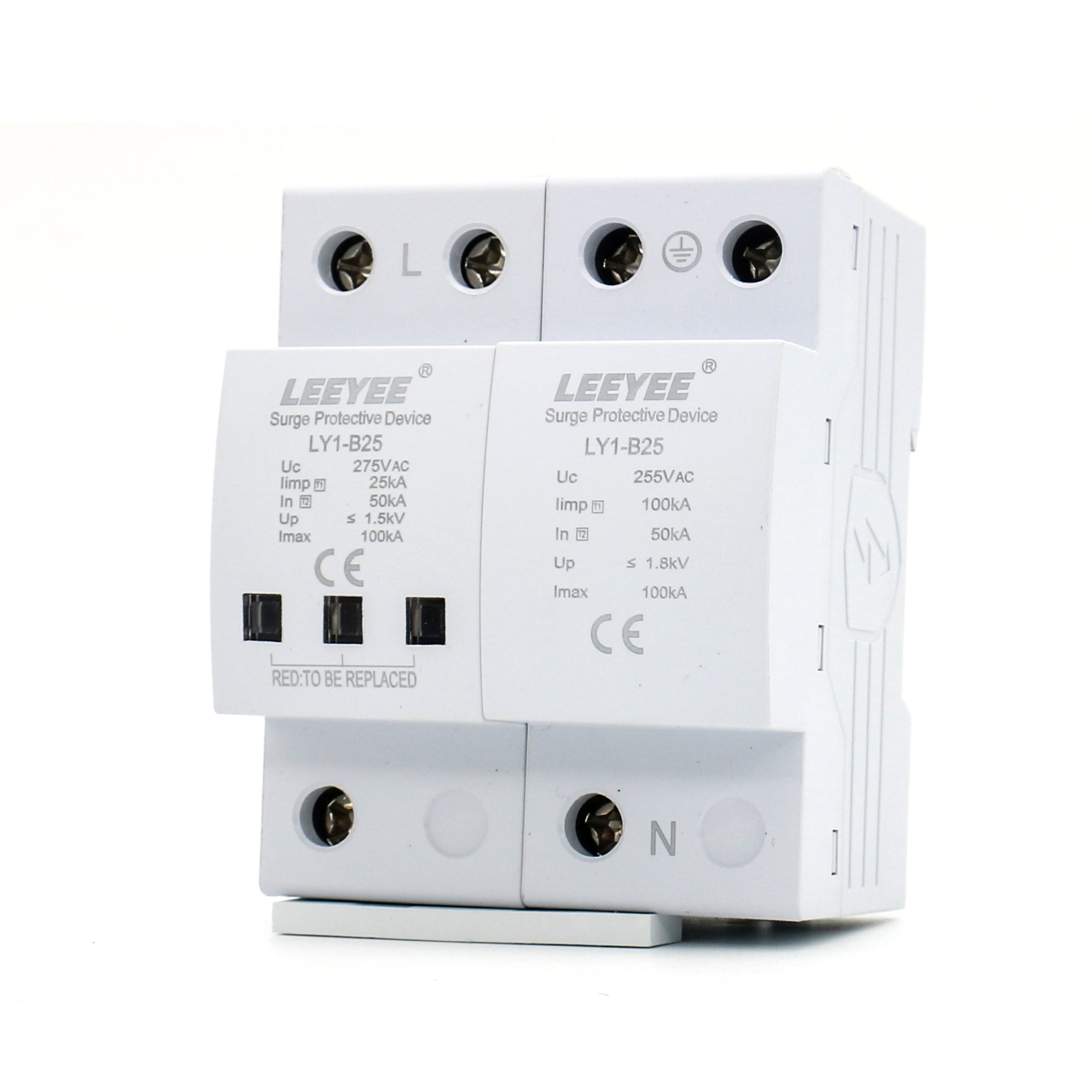Introduction
In modern electrical systems, Surge Protective Devices (SPDs) play a crucial role in protecting equipment from transient voltage surges. These surges can arise from various factors, including lightning strikes, switching events, or sudden load changes. As reliance on both Alternating Current (AC) and Direct Current (DC) systems increases, understanding the differences between AC and DC surge protection becomes essential to ensure optimal protection. This article delves into the characteristics, applications, and distinctions of AC and DC surge protective devices, providing a comprehensive guide for professionals and enthusiasts alike.
1. Basic Concepts
1.1 What are Surge Protective Devices?
Surge Protective Devices are designed to protect electrical equipment from voltage spikes that can cause damage or failure. SPDs divert excess voltage to the ground, ensuring that connected devices operate within safe limits. SPDs are critical in both residential and industrial environments, especially where electrical equipment is vulnerable to surges.
1.2 AC Surge Protective Devices
AC surge protective devices are specifically designed to protect equipment connected to AC power systems. These devices monitor AC voltage and divert excessive surges to the ground, preventing damage to connected appliances and systems.
1.3 DC Surge Protective Devices
DC surge protective devices are designed for DC systems. These devices are commonly used in renewable energy systems, such as solar power installations and electric vehicle charging stations, where maintaining safe DC voltage levels is crucial. Understanding the importance of “surge protection DC” is vital for protecting these systems.
2. The Importance of Surge Protection
2.1 The Risks of Voltage Surges
Voltage surges can be triggered by various factors, including:
- Lightning Strikes: A direct lightning strike can induce massive voltage spikes in electrical systems, leading to catastrophic damage.
- Switching Operations: Turning large equipment on or off can generate transient voltages that affect nearby devices.
- Fault Conditions: Short circuits or equipment failures can generate surges that must be effectively managed.
As electrical systems grow more complex and sensitive electronic devices proliferate, the demand for effective surge protection becomes increasingly urgent.
2.2 The Role of SPDs in Electrical Systems
Surge Protective Devices serve as the first line of defense against transient voltage surges. By limiting the voltage reaching sensitive equipment, SPDs can:
- Prevent Equipment Damage: By suppressing excess voltage, SPDs prevent electrical components from suffering irreversible damage.
- Reduce Downtime: Protecting equipment from surge impacts can minimize unexpected failures and system downtime.
- Enhance Safety: SPDs can improve overall electrical safety by preventing dangerous voltages from reaching users or equipment.
3. AC Power Systems Overview
3.1 What is an AC Power System?
Alternating Current (AC) power systems are the most common form of power distribution worldwide. AC power alternates in direction and magnitude, typically following a sinusoidal waveform. This allows for efficient long-distance transmission and is suitable for a wide range of applications.
3.2 Components of an AC Power System
An AC power system consists of several key components:
- Generation: Electricity is generated at power plants using various energy sources, including fossil fuels, nuclear, hydro, and renewables.
- Transmission Lines: High-voltage transmission lines deliver electricity over long distances to substations.
- Substations: These facilities reduce voltage for distribution and may include transformers, switching equipment, and protective devices.
- Distribution Network: This network delivers electricity to homes and businesses through low-voltage distribution lines.
- End-User Equipment: This includes all devices that utilize electricity, such as appliances, lighting, and industrial machinery.
3.3 The Significance of Surge Protection in AC Systems
In AC power systems, surges can adversely affect sensitive electronic devices, appliances, and industrial machinery. AC SPDs are critical for preventing damage from surges caused by external factors (like lightning) and internal factors (like switching operations). They are typically installed at key points in the electrical system, including:
- Service Entrance: Protecting the entire electrical system from external surges.
- Distribution Panels: Protecting circuits supplying sensitive equipment.
- Point-of-Use Protection: Protecting individual devices and appliances.
4. DC Power Systems Overview
4.1 What is a DC Power System?
Direct Current (DC) systems provide a constant voltage that does not change over time. DC power is commonly used in batteries, electronic devices, and renewable energy systems like solar panels. While DC systems offer distinct advantages, they also face unique challenges regarding surge protection.
4.2 Components of a DC Power System
A typical DC power system consists of several components:
- Power Sources: Devices that generate DC power, including batteries, solar panels, and fuel cells.
- Inverters: In renewable energy systems, inverters convert DC to AC for grid compatibility or to power AC appliances.
- Charge Controllers: Used in battery systems to regulate voltage and prevent overcharging.
- Load Devices: End-user devices that consume DC power, such as LED lights, electronics, and electric vehicles.
4.3 The Importance of Surge Protection in DC Systems
While DC systems can be simpler, they are more sensitive to surge-related issues. Voltage surges in DC systems can be caused by:
- Fast Switching: Turning a DC circuit on or off can generate voltage spikes due to energy stored in inductive loads.
- Fault Conditions: Short circuits or overloads can lead to significant surges that must be effectively managed.
Thus, DC SPDs are essential for protecting inverters, batteries, and electronic devices, particularly in the context of “surge protection DC.”
5. Differences Between AC and DC Surge Protective Devices
5.1 Voltage Characteristics
- AC Voltage: AC voltage varies in sinusoidal patterns, with positive and negative peaks, leading to more complex surge characteristics. AC SPDs are designed to effectively handle these fluctuations.
- DC Voltage: DC voltage is constant and unidirectional. This stability requires DC SPDs to manage surges differently, often needing specialized components to address the unique characteristics of DC systems.
5.2 Surge Waveform
- AC Surge Waveform: AC surges typically resemble a sine wave, occurring at different points in the oscillation cycle.
- DC Surge Waveform: DC surges tend to be abrupt spikes, which can lead to more severe instantaneous voltage.
5.3 Design and Components
- AC SPDs: Typically utilize components like Metal Oxide Varistors (MOVs) and Gas Discharge Tubes (GDTs) designed to clamp voltage during surges. These components are engineered to handle rapid oscillations of AC voltage.
- DC SPDs: May employ specialized components, such as Schottky diodes, to manage unidirectional current flow. They are designed to prevent overvoltage conditions while considering the steady-state characteristics of DC.
5.4 Installation Practices
- AC SPDs: Usually installed at service entrances, distribution panels, and point-of-use locations. They can be integrated into electrical panels or installed externally.
- DC SPDs: Typically installed near power sources (such as solar inverters) and at key points within DC circuits to provide localized surge protection.
6. Performance Specifications for SPDs
6.1 Key Performance Metrics
When selecting surge protective devices, several key performance metrics should be considered:
- Rated Voltage: The Maximum Continuous Operating Voltage (MCOV) that the SPD can handle without failure.
- Surge Current Rating: The maximum surge current that the SPD can withstand (measured in kA).
- Response Time: The time the SPD takes to react to a surge event, which can impact its effectiveness.
- Clamping Voltage: The voltage level at which the SPD begins to divert excess energy, thereby protecting connected devices.
- Lifetime: The expected lifespan of the SPD, which may be affected by the frequency and severity of surge events.
6.2 Testing and Certification Standards
SPDs must adhere to industry standards and testing protocols to ensure reliability and performance. Key standards include:
- IEC 61643-11: International standard for surge protective devices used in low-voltage power systems.
- UL 1449: Underwriters Laboratories standard regarding surge protective devices, including performance and safety testing.
- IEEE C62.41: Standard providing guidance on surge voltage and current characteristics in power systems.
7. Installation and Maintenance of SPDs
7.1 Installation Guidelines
Proper installation of surge protective devices is crucial for effective surge protection. Some best practices include:
- Follow Manufacturer Guidelines: Always adhere to installation and wiring instructions provided by the manufacturer.
- Choose Appropriate Locations: Select locations that maximize protection while minimizing potential external threats.
- Ensure Proper Grounding: SPDs should be grounded per local electrical codes to provide an effective path for surge diversion.
7.2 Maintenance Considerations
Regular maintenance of surge protective devices is vital to ensure their continued effectiveness. Key maintenance practices include:
- Visual Inspections: Regularly check SPDs for signs of damage, wear, or failure.
- Testing: Conduct routine tests to verify that SPDs are functioning as intended and capable of handling surge events.
- Replacement: If an SPD has experienced significant surge events, it may need to be replaced to ensure ongoing protection.
8. Applications of Surge Protective Devices
8.1 Residential Applications
In residential settings, surge protective devices are essential for protecting sensitive electronic devices, appliances, and home automation systems. Common applications include:
- Home Entertainment Systems: Protecting TVs, audio systems, and gaming consoles from power surges.
- Computers and Network Devices: Safeguarding computers, routers, and modems from transient voltage spikes.
- Smart Home Devices: Ensuring the longevity of smart home devices that rely on stable power.
8.2 Commercial Applications
In commercial settings, SPDs are crucial for protecting equipment in offices, retail spaces, and manufacturing facilities. Applications include:
- Data Centers: Protecting servers and network equipment from surges that could lead to data loss or downtime.
- Industrial Machinery: Protecting motors, drives, and control systems from voltage spikes that could cause equipment failure.
- Retail Electronics: Ensuring the integrity of point-of-sale systems and other critical electronic devices.
8.3 Industrial Applications
Industrial environments often face greater surge impacts due to heavy machinery and varying power loads. SPDs are vital for:
- Motor Control: Protecting Variable Frequency Drives (VFDs) and Motor Control Centers from surges.
- Process Control Systems: Ensuring the reliability of control systems that manage industrial processes.
- Renewable Energy Systems: Protecting solar inverters and battery storage systems from surges that could damage sensitive components.
9. Future Trends in Surge Protection Technology
9.1 Advancements in Materials and Design
The surge protection industry is continuously evolving, with advancements in materials and design leading to improved performance. Some trends include:
- Smart SPDs: Integrated monitoring and diagnostic capabilities provide real-time data on surge events and device status.
- Nanotechnology: The use of nanomaterials enhances the performance and efficiency of surge protective devices.
- Compact Designs: Development of smaller, more efficient SPDs for easier integration into existing systems.
9.2 The Role of Renewable Energy
As renewable energy systems become more prevalent, the need for effective surge protection in these applications will continue to grow. Future trends may include:
- Enhanced Protection for Solar Inverters: SPDs specifically designed to protect solar inverters from surges caused by external factors like lightning.
- Battery Storage Systems: Tailored SPDs for battery storage systems to ensure the longevity and reliability of batteries.
10. Conclusion
Surge protective devices are essential components of modern electrical systems, providing critical protection against voltage surges that can damage equipment and systems. Understanding the differences between AC and DC SPDs is crucial for selecting the appropriate protection for specific applications. By considering factors such as voltage characteristics, surge waveforms, and installation practices, professionals can ensure optimal protection for their electrical systems.
As technology advances and the importance of surge protection grows, staying informed about the latest trends and best practices will be key to maintaining electrical installations’ safety and reliability. Whether in residential, commercial, or industrial settings, the right surge protection devices can significantly impact the protection of valuable equipment and ensure uninterrupted operation.
If you need further assistance or have any questions about surge protection solutions for your systems, please feel free to contact us. We’re here to help!


